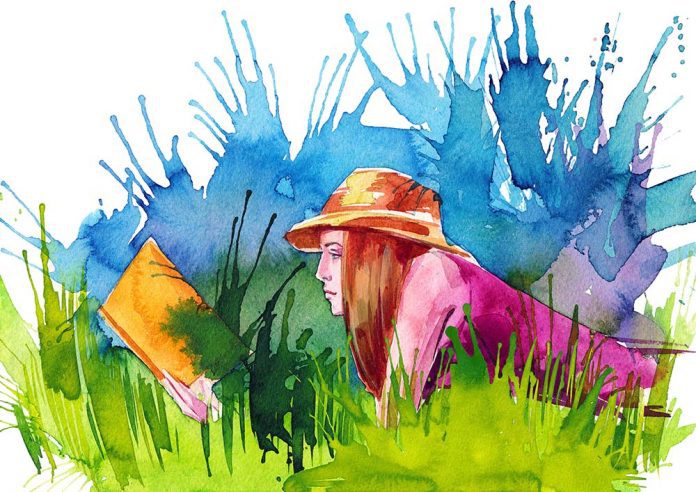1. Oklahoma students speak about a liberal-arts education

Often bypassed by thousands of aspiring seniors in Oklahoma high schools are small liberal-arts colleges nearby.
While the vast majority of in-state, college-bound students go to either the University of Oklahoma, Oklahoma State University, a regional university or a community college, small liberal-arts schools offer other higher-education options – primarily low student-faculty ratios, individualized attention, and broad, deep knowledge in a range of disciplines.
Such schools have higher tuitions than state schools. However, financial-aid directors dissuade prospective students (and parents) from having “sticker shock” because grants, scholarships and work-study jobs – all unlocked via the Free Application for Federal Student Aid, or FAFSA – often lower costs by many thousands of dollars. Some, like St. John’s College’s Southwest Scholars program, offer tuition assistance for specific demographic groups.
Following is a sampling of small liberal-arts colleges in states contiguous to Oklahoma, along with the University of Science and Arts of Oklahoma, a rare bird in that it’s publicly funded (more than 90 percent of small liberal-arts schools are private) with tuition in line with other state colleges.
Tulsan Ann Savage, who played basketball for Division III Austin College in Sherman, Texas, received her bachelor’s degree in mathematics this year … and she’s staying on to earn a master’s degree in teaching.
“Because of the small class sizes, I developed close relationships with professors,” she says. “The president even comes to all the students’ games and performances. My coach never made me choose between class and practice. The coaches really want you in class.
“The research opportunities are great because the college focuses on undergraduates. You don’t have to wait until you’re a grad student to do intense research.”
Savage adds that Austin College has taught her how to be an active, engaged citizen.
“It gave me different perspectives,” she says. “You get to figure out what you want to do and make it happen.”
Jonathan Lee, from Oklahoma City’s Casady School, says liberal-arts colleges, such as Baker University in Baldwin City, Kansas, make you feel at home.
The junior psychology major chose Baker because, from the start, it “was honest and welcoming. They were interested in me as a person, not as a number.”
Lee, active in numerous organizations, says participating in many activities has led him to be “kind of like a mom in making sure everyone has what they need and has done what they need to do.”
Lee says his personal leadership, self-confidence and promptness have emerged.
“I’m more straightforward with my answers to questions,” he says. “My communication skills have definitely grown.”
Aubrey Skeeter of Glenpool solidified her passion for helping indigenous people as she earned her education degree from Colorado College in Colorado Springs.
The Yuchi tribal member, who graduated in May, will pursue a master’s degree in education so she can work with programs and foundations aimed at Native students. One such group, College Horizons, gave her information about Colorado College when she was in high school and helped her to secure large amounts of financial aid from the school, which “made it super-affordable for me to go there.”
“Coming from Glenpool, I found it interesting to go to college with a lot more diversity in the student population,” Skeeter says. “It was important to be with these different thinkers and learners.
“I’m also humbled because I now want to help others who can’t afford it have the same privilege to go to a school like CC.”
Skeeter says she enjoyed Colorado College’s block schedule, which promotes intense focus on just one or two subjects at a time.
“You really get close to your classmates in such a system,” she says.
Taylor Brown, a product of Booker T. Washington High in Tulsa, works as a veterinary technician in Albuquerque, and she attributes some of her career success to the bachelor’s degree in art that she received in 2011 at Hendrix College in Conway, Arkansas.
“Academically, the classes taught me how to think, especially in considering and presenting ideas that I’d not known about before,” she says. “It made me more motivated to be around people not like me and to know people who think differently from me.”
This perspective has helped in veterinary medicine because “you have to work with and relate to different people all the time. I’m more present with people because of my liberal-arts background.”
Brown also says her time at Hendrix enhanced her ethical awareness.
“I see the bigger picture as a whole and that helps me at work,” she says. “‘Why are we doing this?’ is something I always ask.”
Tulsa native Courtney Holmes got her degree in sports management in 2016 from Rockhurst University in Kansas City, Missouri, but it was her overall collegiate experience that helped her begin a career in the trucking industry as a brokerage accountant.
“I built relationships every year at Rockhurst,” she says. “I became open to a lot of opportunities. You see different perspectives, some that you don’t agree with, but I was able to push through. It helps with co-existing.”
Holmes enjoys that she got to take many elective courses, part of a typical liberal-arts core, which “got me out of my comfort zone.”
“Having a degree from Rockhurst gave me confidence in doing what’s right for myself,” she says.
Grove resident Jaxson Oakley is working toward a bachelor’s degree in liberal arts, the only one offered at St. John’s College in Santa Fe, New Mexico. The school boldly states on its homepage, “Life doesn’t have degrees; neither does St. John’s.”
Oakley, a junior, says his will be like “a degree in philosophy with an emphasis on history, math and science.”
Because of his varied interests, St. John’s made sense for him, especially after a co-worker recommended it when he was in high school.
“I had sat in on traditional classes at big universities and they were lecture-based with a lot of Powerpoint presentations and test-taking,” Oakley says. “Having free-form discussions during two-hour seminars drew me to the St. John’s model.”
Oakley says his critical-thinking skills have blossomed the past two years, especially when it comes to his own prejudices and perceptions.
“I rationally de-construct what I think,” he says. “It’s easy to see yourself as an unbiased observer until you realize that others have different views. You then see the foundations of your opinions and examine your life and what you think.”
Randa Hatter, a senior from Stratford who pitches and plays first base on USAO’s softball team, says she wasn’t sure what she was getting into when she transferred to the Chickasha college after her freshman year. She didn’t know what a small liberal-arts school was.
However, that quickly changed and her worldview has evolved the past two years.
“The classes are tough, but it makes my perspective stronger,” Hatter says. “The teachers make you test your outlooks. You become more open. It helps prepare me for life.”
Like many liberal-arts students, Hatter has varied interests. As she completes her major in business, she will also apply to nursing schools.
“The campus community is tight-knit,” she says. “Plus, there’s a lot of diversity in our programs. We have a lot of foreign students, so I get to learn about their cultures.”
2. Co-requisite classes help students improve their skills

Numerous studies indicate that between 40 percent and 65 percent of entering collegians need remediation in math and/or writing. The number of under-prepared freshmen runs into the millions each year nationwide.
Colleges and universities have dealt with remediation for decades, but sticking points for students often revolve around extra time needed to graduate (remedial classes do not accrue credit hours) and the motivation to stay with a selected program.
Northeastern State University in Tahlequah and Tulsa Community College are among many schools getting away from customary remediation classes, which are frequently required before students can enroll in introductory math or writing courses.
In 2015, NSU instituted co-requisite classes in which remedial students in math and writing go to regular, mandatory lab tutoring while taking their introductory classes.
“A student who would test low in math or writing, in the past, would be placed in a zero-credit class before moving on,” says Pamela Fly, Ph.D. and NSU’s associate vice president for academic affairs. “With the co-requisite model, our data show that they have a higher pass rate than those just taking remedial classes.”
Fly attributes the higher outcomes to several factors.
“The rigor of the regular class means they’re around more capable peers, so their motivation is higher,” she says. “Also, having a faculty member in the [math or writing] lab means more questions get asked and answered than in a regular classroom because students know they’re there to get help.
“Plus, getting the actual credit for the introductory class, as opposed to zero credit for a remedial class, contributes to their motivation. Success breeds success.”
The co-requisite model at TCC is a bit different. There, students needing help take back-to-back classes with their instructors. The introductory class has about 50 percent on-level students and 50 percent developmental students.
For example, according to Joshua Baker (TCC’s mathematics department chair), the Essentials for Pre-Calculus I class is taught either right before or right after the regular pre-cal course.
“It’s a just-in-time approach with the same instructor,” he says. “It addresses weaknesses from the pre-cal class.”
Baker says some instructors had moderate skepticism before TCC went to this model in 2017, but “all of us came out of there saying, ‘Why didn’t we do this before?’”
Cody Coonce, an adjunct professor of English at TCC, says the co-requisite classes he teaches (Composition I paired with Writing Foundations) have the benefit of fostering closer ties with students, whose writing improves with the process.
“The familiarity with the instructor increases the number of questions being asked,” he says.
Another program addressing remediation is Math Pathways, which begins its initial run this fall in state colleges and universities.
The Oklahoma State Regents for Higher Education mandated that schools offer three options that can substitute for the traditional college algebra course – quantitative reasoning, functions and modeling, and elementary statistics.
Fly says these additions provide avenues for students to take math courses that correlate with their fields of study.
“A lot of students didn’t have success in college algebra and didn’t use the concepts in their majors,” says Fly, adding that liberal-arts majors might prefer quantitative reasoning, history and psychology majors might gravitate toward statistics, and business majors might favor functions.
3. ‘Common Read’ programs try to tie disciplines together

The lament is often the same for students in the first two years of college.
“These basic courses have nothing to do with my major,” the freshman or sophomore says. “Why do I have to take them?”
A growing number of large colleges and universities, taking cues from scores of small liberal-arts schools, have responded to this frustration with programs that encourage cross-curricular links in introductory courses. Interdisciplinary approaches to core classes often make them meaningful and relevant to students.
One movement is known as the common read, in which all or most students on a campus read the same book to generate discussion in multiple classes.
Tulsa Community College rolls out its version of the common read this semester in its College Success classes, required of most students.
“We were concerned about the silos that students receive in their instruction and the less-holistic approach to education that they were getting,” says Kara Ryan-Johnson, Ph.D., a TCC English professor for 12 years. “A common read helps students see that a college education is more organic than just going to each individual class. Mandatory testing creates environments that draw distinct lines around subject areas, so students often don’t have critical-thinking skills between subjects.”
The first common read at TCC is Phil Klay’s Redeployment, a collection of short stories involving Marines that won the National Book Award in 2014.
“We chose this text because common read programs are frequently accused of being politically biased and motivated,” Ryan-Johnson says. “We got the grant to fund this primarily because of the text, which reaches out to our core students, whose average age is 25.”
Faculty in all disciplines have ready-to-go curricula about Redeployment that they can use in their classes.
“We want students to discover how to live a meaningful life with this program,” Ryan-Johnson says. “A lot of conversations will come about from instructors about what we do and why we do it. The greater purposes are a more-engaged student body and to show how everything fits together in college.”
At Northeastern State University in Tahlequah, nearly every student takes University Strategies. Last year, Callings: The Purpose and Passion of Work by David Isay was the common read.
“It has vignettes about people and their passions,” says Kendra Haggard, Ed.D, an NSU English professor for 15 years. “Students could pull examples from the book, even in science, and use them in all their classes.”
This year’s common read, The Working Poor: Invisible in America by David Shipler, should have “a broader and deeper appeal because it shows health-care issues and their political aspects and how they affect your children and education,” Haggard says.
University Strategies students also write about their experiences in all classes and are encouraged to make connections between them.
“Students often change their perceptions about what they’re good at,” Haggard says.
4. No more shushing for quiet in the library

Cathedral-like quiet and reverence may dominate most people’s images of university libraries – full of stacks, silence and sacrosanct tomes.
Those mental pictures, however, do not comprise the reality of today’s collegiate libraries, which teem with activity, workshops, discussions, instruction and cutting-edge technology.
“A lot of what we’ve been dabbling in – and other universities are following – are our innovation spaces,” says Carl Grant, interim dean of libraries at the University of Oklahoma. “For six years, we have had our Innovation at the Edge program conducting research in virtual reality, coding, micro-processing, even software carpentry. We have a host of certified instructors who can now turn around and certify others.
“You don’t have to take a semester-long course in these subjects. We have dozens of these classes and they just last one or two days.”
Grant says academic libraries help to drive innovation in higher education because they provide a central location for different people to exchange ideas. He cites the library’s Data Analytics, Visualization and Informatics Syndicate (known by its acronym, DAVIS) as an example.
“It’s a joint effort of people across campus,” says Grant, adding that many fledgling entrepreneurs have begun their work at DAVIS. “Many research grants require a data-management plan and that’s the expertise we can provide in the library. It all ties together at the library.”
One doesn’t have to be in science, technology, engineering or mathematics to benefit from the library’s innovative programs. The Digital Scholarship Lab, Grant says, focuses on the humanities.
“Many places are geared toward math and science, and we have that,” he says. “With the creative side, it’s hard to measure the work. But we’ve created different tools to use in digital technology to enhance what researchers do.
“We have a scholar who photographed an archaic work you can’t touch – an ancient text with elaborate drawings. With virtual reality and zooming in on each letter, he found out how the ink was made so he can reconstruct the work.
“You can virtually walk through the microscopic parts of the page.”
Chelsea Julian, OU Libraries’ communications coordinator, says another initiative gaining ground is open access to faculty research.
“With open access, you don’t have to have access to academia to get information,” she says. “You’re not limited in what you can get” because of which academic journals a library subscribes to.
Grant adds, “There’s prestige if your findings are used around the world via open access.”
This fall, OU Libraries’ Digital Skills Hub launches a class on how social media affects information and news reports. Another class shows students how to analyze what search tools get from them. Search engines like Google, which captures every user’s every keystroke, gather enormous amounts of data from people. Grant says they need to become digitally savvy with what they share about themselves.
“As we work more with artificial intelligence and couple that with all the data that AI captures – it’s scary,” he says. “Look at what happens to creativity when data is used to keep us from bumping into each other.”
On the nuts and bolts level, OU Libraries’ digital carpentry classes “teach foundational coding and data science skills to researchers,” says Julian, adding that programs are conducted around the state and virtually around the world.
Feedback is overwhelmingly positive. Julian cites numerous workshop students who have applied what they learned to their individual work and jobs, regardless of discipline.
“Our nine certified carpentries instructors assist OU scholars across [all] campuses with the computing skills that can advance their research,” she says.
5. Artificial Intelligence magnifies what teachers do

Just as physician assistants expand what doctors can do in a clinic, artificial intelligence allows instructors to extend their educational reach in a classroom.
Like the physician assistant, AI doesn’t replace the person ultimately in charge. It enhances the instructor’s curriculum by identifying concerns in student work and providing extensive, quick feedback.
Texas A&M University professors use AI in multiple settings, from teacher training to architectural design.
Kay Wijekumar, Ph.D., director of the Center for Urban School Partnership, has pioneered the use of AI in improving reading skills of students. She has funneled millions of dollars in grants to get Intelligent Tutoring for the Structure Strategy (ITSS, as it’s known throughout academia) into K-12 classrooms to help struggling readers. She also uses this machine learning to teach teachers about its methodology.
“Our focus has been on elementary, middle and high school students because the earlier you remediate, the better,” she says, “but newer grants are for teachers to learn these skills to pass along to their students.”
Many young students, Wijekumar says, hit a so-called fourth-grade slump with their reading skills, but AI can be used at any grade level. Her program measures a student’s ability to grasp causation, comparison and sequencing in a written passage, then “provides specific feedback, instead of just saying, ‘Try again,’ to address that student’s weaknesses.”
As skills increase, “students are transitioned into higher-learning, more challenging texts from different subject areas, like science or social studies,” Wijekumar says. “The new system of ITSS even allows teachers to take the texts they’re already using in class and put them into the program.”
The results have been powerful. Wijekumar says a school in Brownsville, Texas, “followed this method and teachers in three different grades over three consecutive years had a 100% pass rate on their reading tests.”
Elsewhere on the Texas A&M campus, Tracy Hammond, Ph.D., uses AI in the Sketch Recognition Lab, which she directs as an associate professor of computer science and engineering.
She cites Mechanix, which architecture students use to analyze their drawings on a tablet or computer of a specific project, such as a bridge or truss.
“Instead of just giving the right or wrong answer, the program gives feedback on the process,” Hammond says. “The system figures out the shapes and lines of what the student means.
“Our research is also trying to measure human emotions. We use AI to track eye movements and body movements and provide feedback.”
Hammond says AI can detect eye patterns that reflect knowledge. For example, it can examine fractal patterns of someone examining a mammogram for breast cancer. If someone knows what to look for on the scan, there’s a distinct difference in eye movement.
With the Sketchtivity program, students learn how to make 3D drawings on paper while they’re on-site with potential customers. This AI tool “provides multi-tier metrics on how a student can improve a drawing. We’ve found that it also increases speed and accuracy,” Hammond says.
Like Wijekumar, Hammond touts AI’s speedy responses to students.
“Teachers have found it to be fantastic,” she says. “Before, they could give feedback on just one problem per student because of the time involved. Now, the feedback is on hundreds of problems. Students have more motivation because they’re understanding information more quickly. Plus, the lower students are doing better.
“Instructors can give quizzes at the start of class, then give immediate feedback before the end of class with targeted lectures about any problems.”
And on the humorous level, AI can quickly figure out whether a student is trying to “game” a program. For example, students trying to get around multiple-choice tests sometimes guess by choosing what they perceive to be an answer pattern.
“We invented metrics called persistence and stubbornness to detect what they’re trying to do,” Hammond says. “It’s pretty clear what’s going on.”
“We invented metrics called persistence and stubbornness to detect what they’re trying to do,” Hammond says. “It’s pretty clear what’s going on.”






















